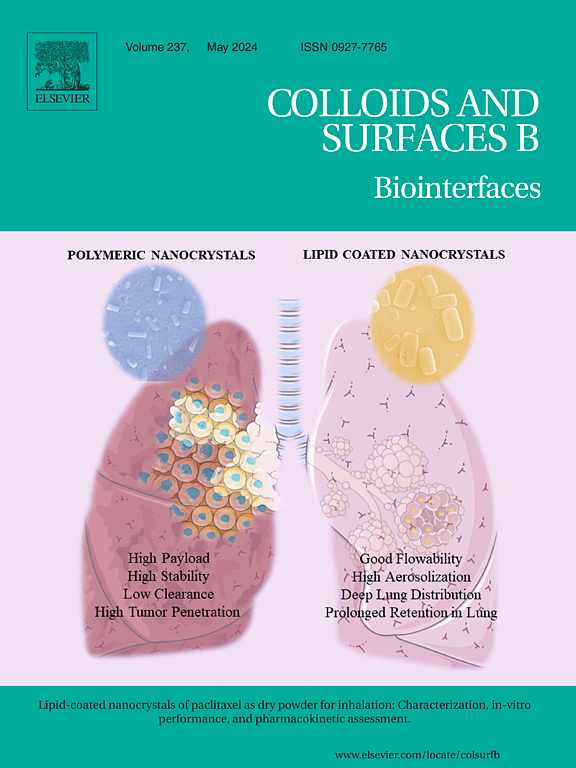碳纳米球的设计与合成策略及其生物医学应用
IF 5.6
2区 医学
Q1 BIOPHYSICS
引用次数: 0
摘要
碳纳米球具有独特的纳米结构和优异的物理化学性能,具有高的表面体积比和可调的表面化学特性。它们在各个领域引起了广泛的研究兴趣,近年来取得了很大的进展。本文综述了碳纳米球的主要合成方法和功能化设计策略。这些策略包括可控合成不同结构和形态的碳纳米球,纳米材料、官能团、聚合物和功能分子的表面修饰,以及氮和多杂原子掺杂。然后,综述了碳纳米球在生物领域的应用,主要集中在生物成像、药物传递和治疗等方面。最后,对未来CNSs的研究和发展进行了展望。本文章由计算机程序翻译,如有差异,请以英文原文为准。
Design and synthesis strategies of carbon nanospheres and their biomedical applications
Carbon nanospheres (CNSs), featuring unique nanostructures and remarkable physicochemical properties, offer significant advantages such as high surface-to-volume ratio and tunable surface chemistry. They have generated extensive research interest in various fields, and great progress has been made in recent years. This review summarizes the main synthesis and design strategies for the preparation and functionalization of carbon nanospheres. These strategies include the controllable synthesis of carbon nanospheres with different structures and morphologies, surface modification with nanomaterials, functional groups, polymers, and functional molecules, as well as heteroatom doping with nitrogen and multi-heteroatoms. Then, the applications of carbon nanospheres in the biological field are reviewed, mainly focusing on bioimaging, drug delivery and therapy. Finally, some prospects for the future research and development of CNSs are proposed.
求助全文
通过发布文献求助,成功后即可免费获取论文全文。
去求助
来源期刊

Colloids and Surfaces B: Biointerfaces
生物-材料科学:生物材料
CiteScore
11.10
自引率
3.40%
发文量
730
审稿时长
42 days
期刊介绍:
Colloids and Surfaces B: Biointerfaces is an international journal devoted to fundamental and applied research on colloid and interfacial phenomena in relation to systems of biological origin, having particular relevance to the medical, pharmaceutical, biotechnological, food and cosmetic fields.
Submissions that: (1) deal solely with biological phenomena and do not describe the physico-chemical or colloid-chemical background and/or mechanism of the phenomena, and (2) deal solely with colloid/interfacial phenomena and do not have appropriate biological content or relevance, are outside the scope of the journal and will not be considered for publication.
The journal publishes regular research papers, reviews, short communications and invited perspective articles, called BioInterface Perspectives. The BioInterface Perspective provide researchers the opportunity to review their own work, as well as provide insight into the work of others that inspired and influenced the author. Regular articles should have a maximum total length of 6,000 words. In addition, a (combined) maximum of 8 normal-sized figures and/or tables is allowed (so for instance 3 tables and 5 figures). For multiple-panel figures each set of two panels equates to one figure. Short communications should not exceed half of the above. It is required to give on the article cover page a short statistical summary of the article listing the total number of words and tables/figures.
 求助内容:
求助内容: 应助结果提醒方式:
应助结果提醒方式:


